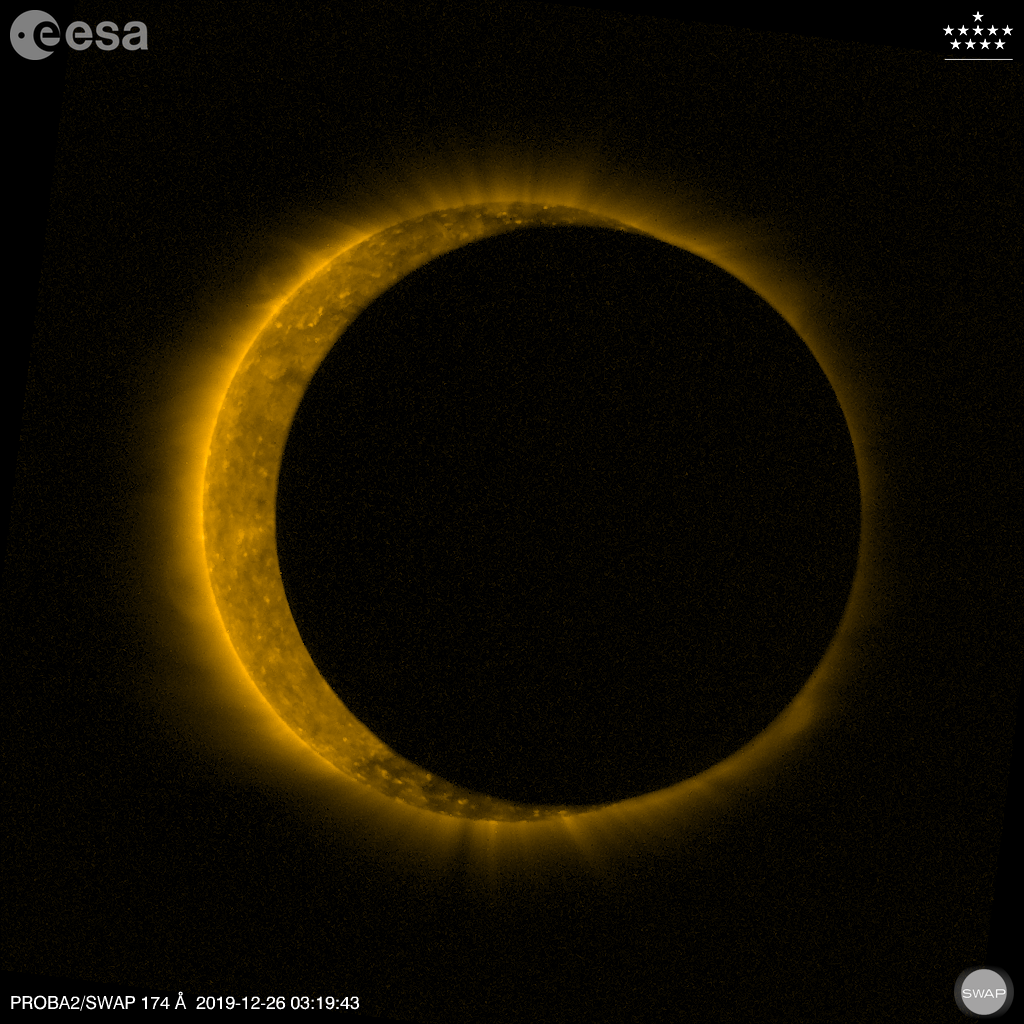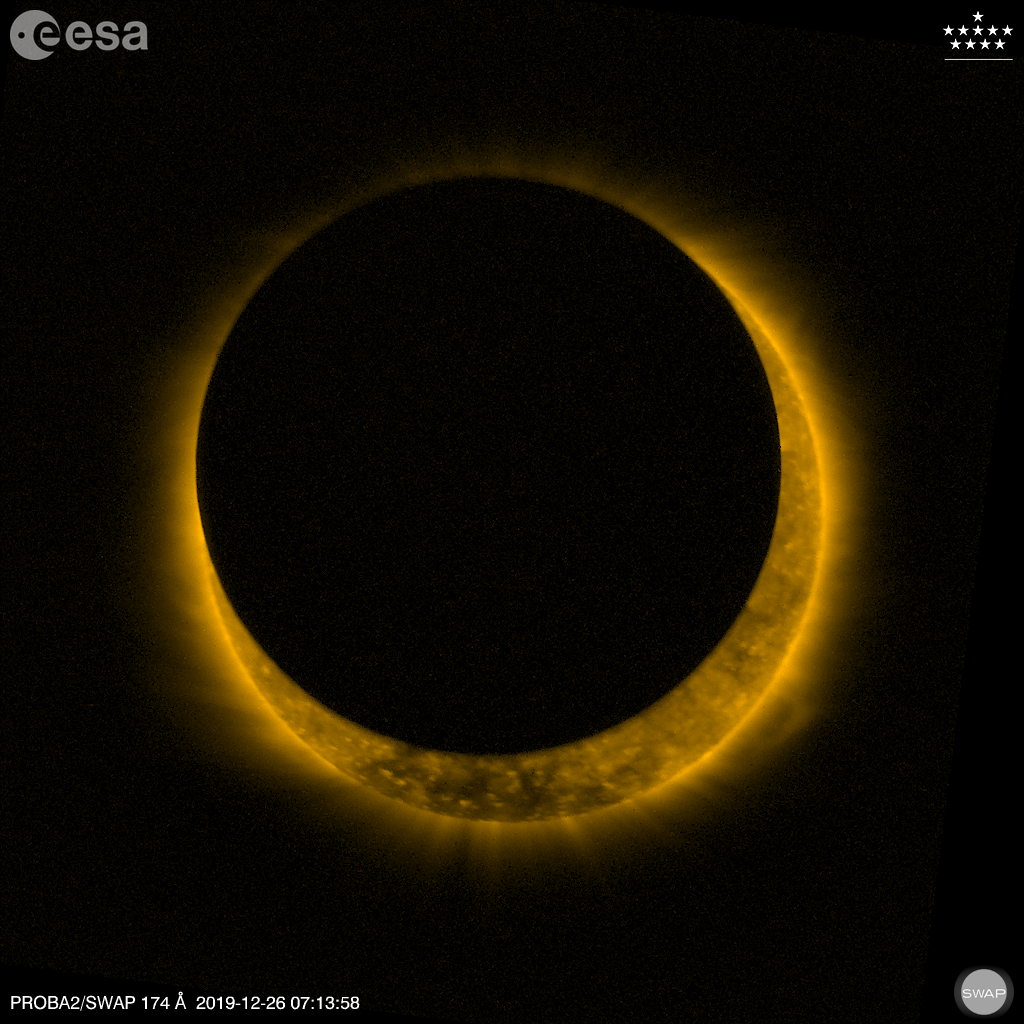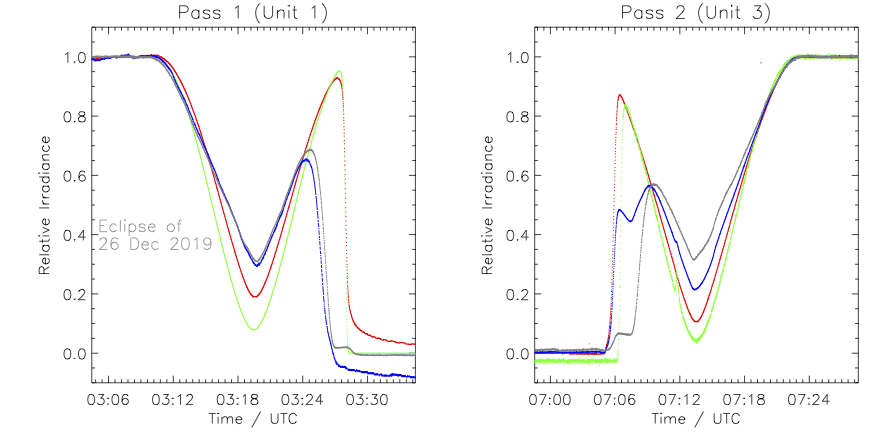Main menu
You are here
PROBA2 sees a Partial Eclipse on December 26, 2019
 On December 26, 2019 an annular solar eclipse took place. The eclipse path ran over multiple countries including parts of India, Indonesia and Malaysia and many nearby countries could also see a partial eclipse. This eclipse was not visible from Belgium, but we were able to observe it as a partial solar eclipse with the Belgian PROBA2 satellite. The satellite orbits the Earth so quickly that it was able to observe the eclipse more than once before the Moon had completely traversed the solar disk.
On December 26, 2019 an annular solar eclipse took place. The eclipse path ran over multiple countries including parts of India, Indonesia and Malaysia and many nearby countries could also see a partial eclipse. This eclipse was not visible from Belgium, but we were able to observe it as a partial solar eclipse with the Belgian PROBA2 satellite. The satellite orbits the Earth so quickly that it was able to observe the eclipse more than once before the Moon had completely traversed the solar disk.
SWAP Data of the Eclipse
Latest observations of the December 2019 Solar Eclipse by SWAP.


A movie simulating the view of the SWAP instrument can be found below
You may notice that this simulation appears different to the movie of the observations. This is due to something called "occultations".
What are Occultations?
As PROBA2 orbits the Earth, the orbit produces periods when the Earth is closer to the SWAP field of view, as shown by the number in the upper right hand corner of the movie which is a measure of the 'tangential height'. This tangential height is the altitude (in km) of the lowest point of the Earth atmosphere throught which the sattelite observes the Sun. In fact, there are even short periods in the orbit when this altitude reaches zero and the Earth passes in front of the SWAP field of view, eclipsing the Sun from the perspective of the satellite. This measure of altitude is an important parameter during PROBA2's occultation period, when the instruments onboard observe the Sun through the Earth's atmosphere, as the atmosphere absorbes part of the solar light. The occultations experienced by PROBA2 also affect our view of the solar eclipse as there will be short intervals when the Sun is not visible and so in the movie above there are time gaps where the moon appears to "skip forward". At those moments, the Sun, the moon, the Earth and PROBA2 are perfectly aligned. This is also the reason why PROBA2 only saw two eclipses of the moon in front of the Sun as the third one shown in the prediction fully coincided with when the view of SWAP was occulted by the Earth.
The Eclipse as Observed by LYRA
The LYRA radiometer also observed the eclipse. For the occasion, a backup unit (unit 1 or unit 3) has been activated in parallel to the usual nominal unit (unit 2) during each transition in the eclipse zone. This provided us with higher quality data since the backup units have been more preserved from aging than the nominal one. The timeseries corresponding to the four channels of the backup unit in use are displayed on the figures below. Note that the occultations are well visible here as well. They correspond to the sudden drop of signal observed after 03:24 and before 07:06.

Observations of the eclipse with the backup units of LYRA.
